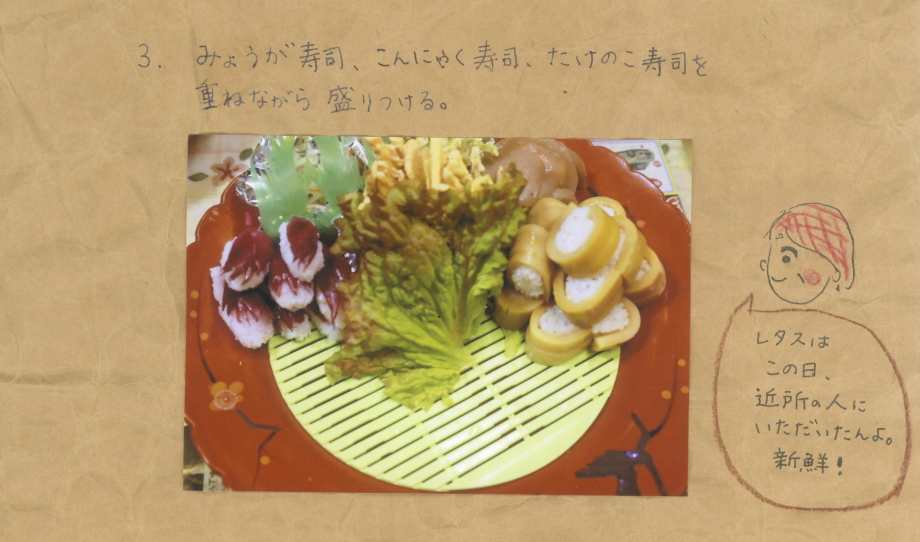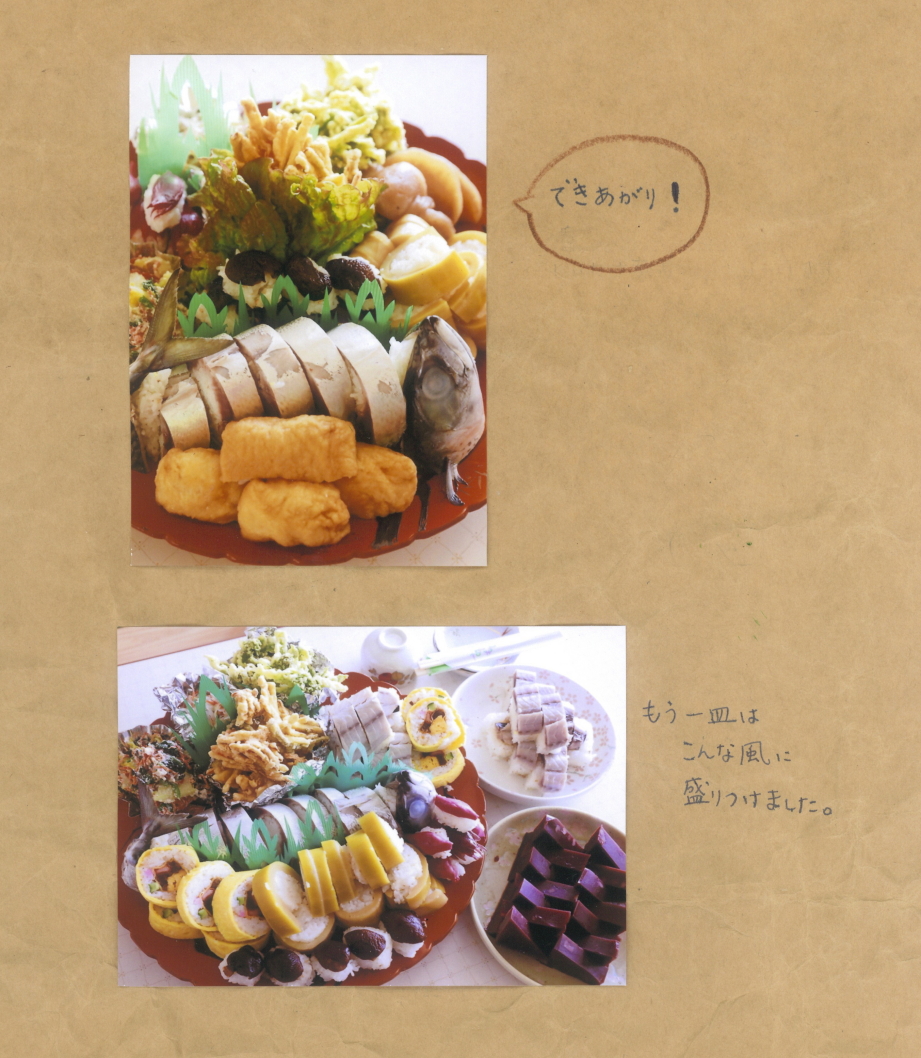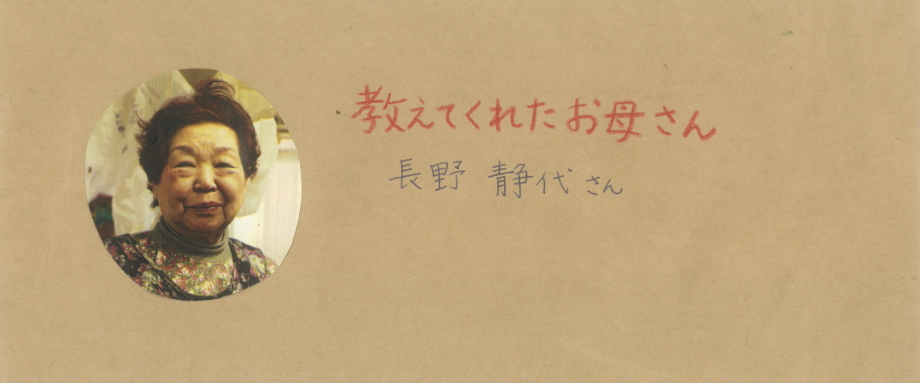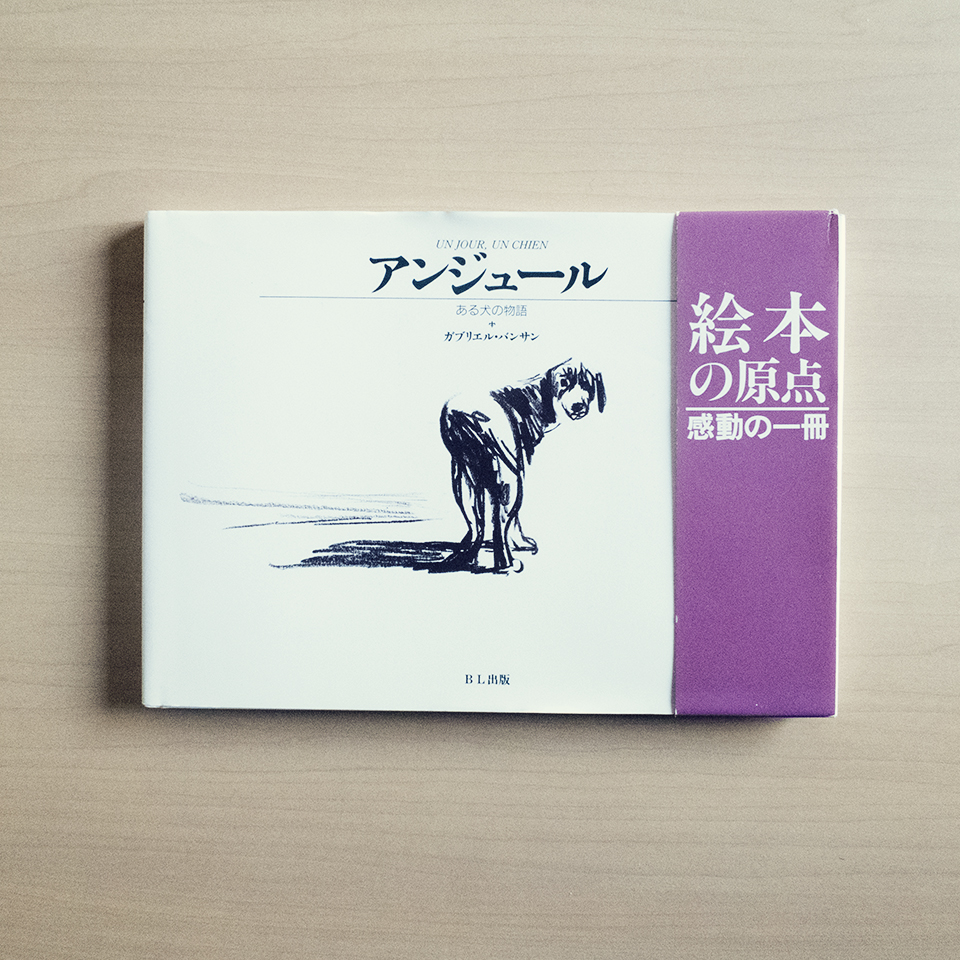
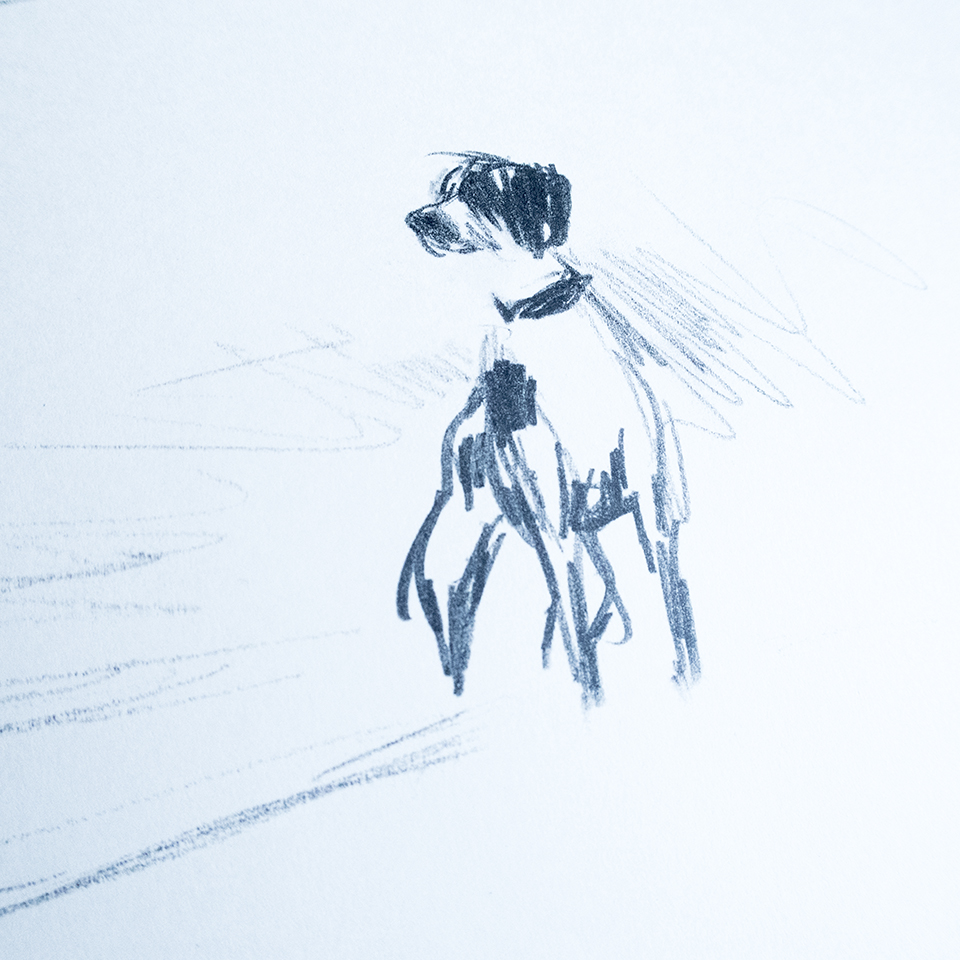
「アンジュール―ある犬の物語」 ガブリエル バンサン ブックローン出版
土佐町の山崎幸子さんが紹介してくれた一冊は、ガブリエル・バンサン作「アンジュール」。
この本は鉛筆の線のみで描かれ文字はありません。
飼い主に捨てられた一匹の犬の悲しみや戸惑いを鉛筆の線だけでここまで表せるのかと驚きました。
最後にひとりの少年に出会い、お互いに少しずつ近づいて行く姿にいつもぐっときます。
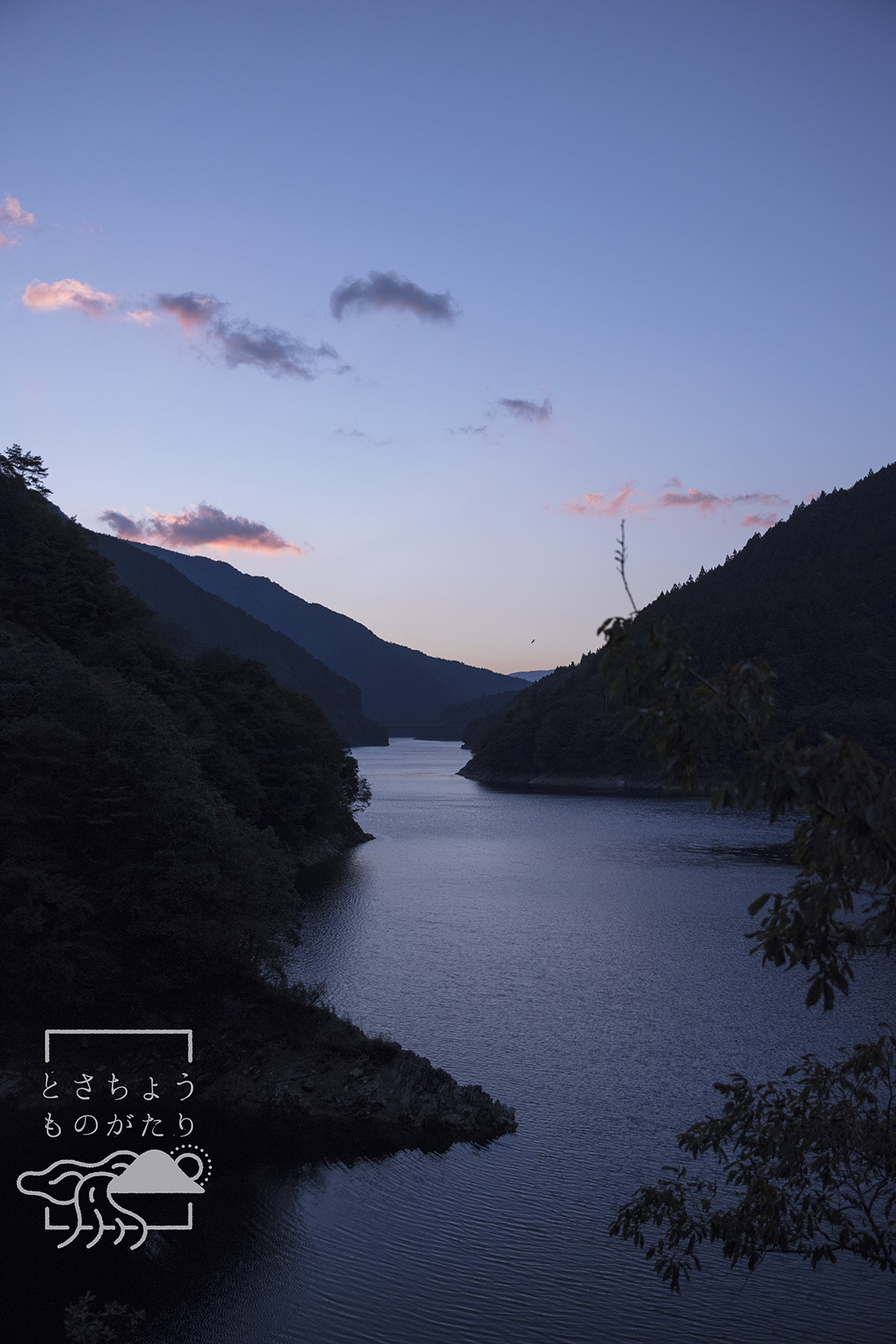
著者名
記事タイトル
掲載開始日
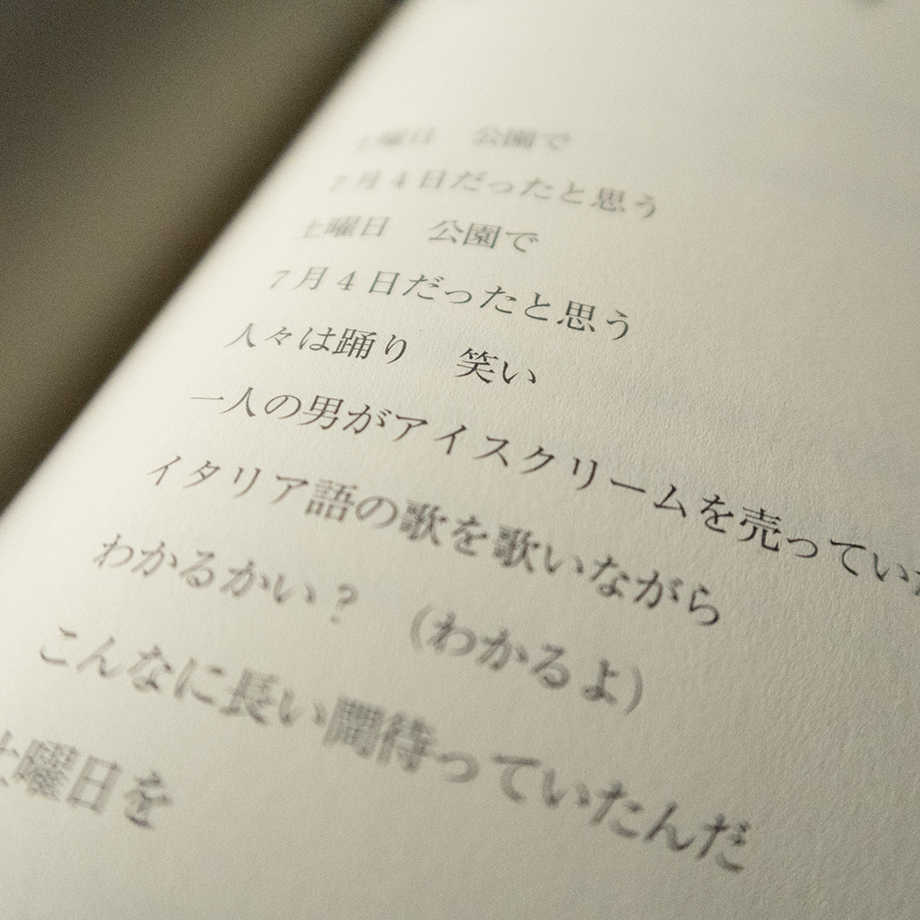
山の人、町の人。先祖代々住む人、都会から越してきた人。猟師さん、農家さん、森の人、職人さん、商店さん、公務員…。
人口4,000人弱の土佐町にはいろいろな人がいて、いろいろな人生があります。
土佐町のいろいろな人々はどんな本を読んでいるのでしょうか?もしくは読んできたのでしょうか?
みなさんの好きな本、大切な本、誰かにおすすめしたい本を、かわりばんこに紹介してもらいます!
(敬称略・だいたい平日毎日お昼ごろ更新)
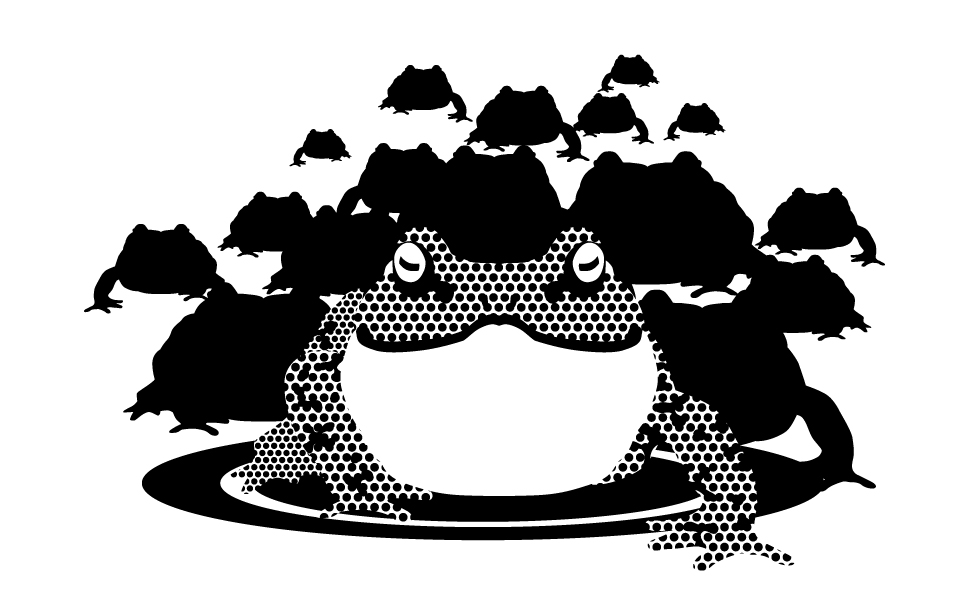
南越(みなごし)トンネルは、土佐町役場方面から、早明浦ダム湖周辺に向けて抜けているトンネルです。
トンネルといえば、怖いイメージがつきものですが、南越トンネルも例にもれず「あのトンネルは怖い」という噂があります。
祖母も「私が若い頃は、一人であそこをよう歩かんかった。一人で歩きよったら何かがついてくるんじゃ」と言っていました。
そんな南越トンネル付近の怖い話を、最近聞きました。
それは、私の書いた「家の主」という記事を読んだ町長が話してくれたものです。
「何年か前ににゃあ、『オンビキ(ヒキガエル)がようけおるき、何とかしてくれんか』ゆうて言われて、南越トンネルの辺に行ったらにゃあ」
「オンビキが100匹ばぁ、ゴゾゴゾ這いよってにゃあ」
「側溝にもみっしり詰まっちょった」
「何とかしてくれと言われても何ともできなぁー、殺すのも気持ち悪いし!!」
ぎゃーーーーーーーーーーーーーーーーーーーーーーーーーーーーーーーーーーー
今後、南越トンネル付近を通るたびに、背筋がゾクゾクしそうです。
・『家の主』の記事はこちら!
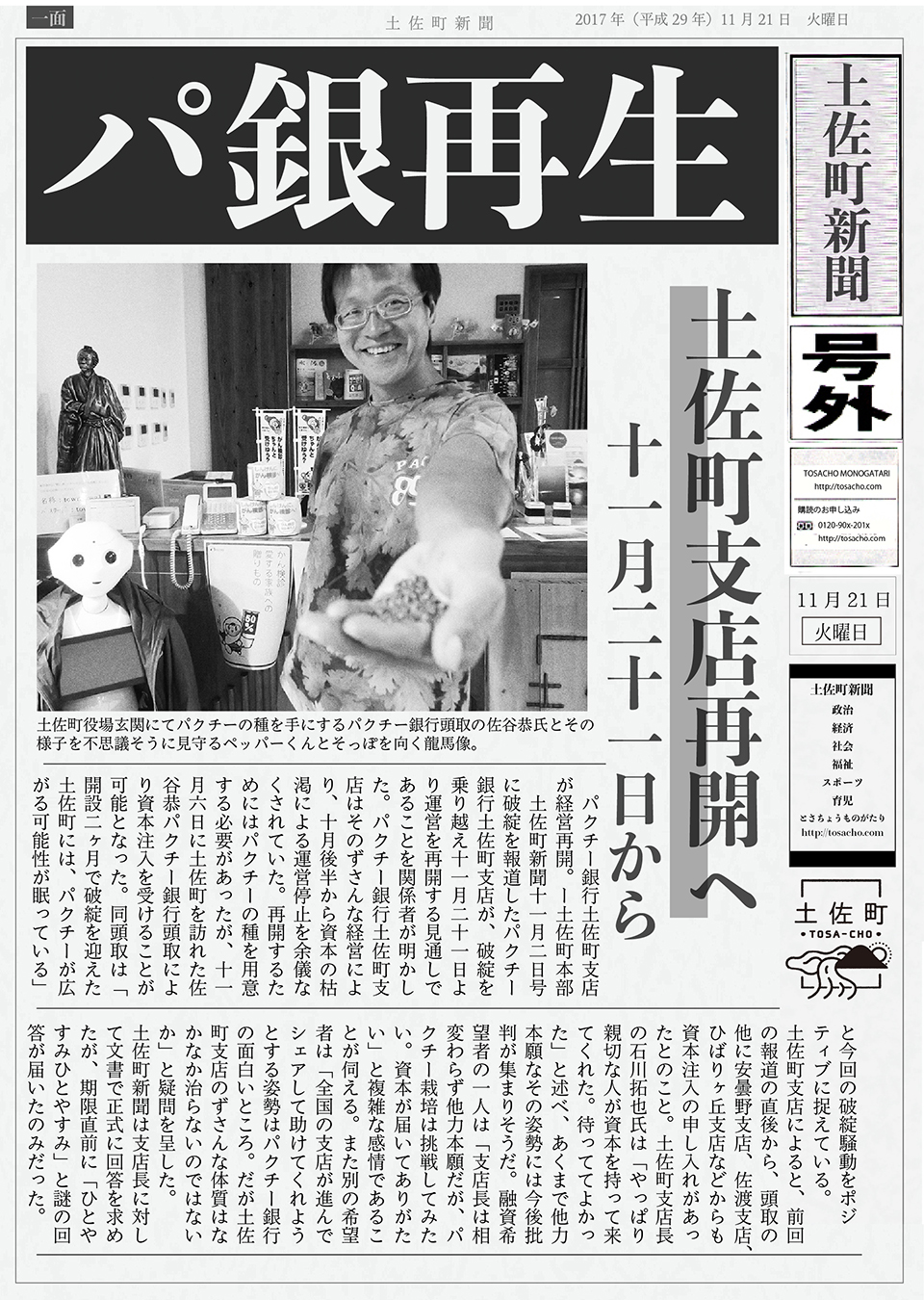
うれしいお知らせです。
パクチー銀行土佐町支店が経営破綻したのが11月2日のこと。
資本であるパクチーの種が気づいたら枯渇していたのが原因です。困っていたところ、去る11月6日に土佐町を訪問したパクチー銀行頭取・佐谷恭氏の手によって新たな資本が届けられました。
今回の追加資本によって、土佐町のみなさまがたくさんパクチーを栽培し、採れた種の一部を返却してもらえると、パクチー銀行はその循環によって半永久的に運営が可能になります。そうなるといいなあ。
パクチー銀行土佐町支店 が経営再開。ー土佐町本部
土佐町新聞十一月二日号 に破綻を報道したパクチー 銀行土佐町支店が、破綻を 乗り越え十一月二十一日より 運営を再開する見通しであ ることを関係者が明かした。
パクチー銀行土佐町支店 はそのずさんな経営により、 十月後半から資本の枯渇による運営停止を余儀なくさ れていた。再開するために はパクチーの種を用意する ことが必須だったが、十一 月六日に土佐町を訪れた佐谷恭パクチー銀行頭取により資本注入を受けることが 可能となった。
同頭取は「開設二ヶ月で破綻を迎えた土佐町には、パクチーが広 がる可能性が眠っている」と今回の破綻騒動をポジ ティブに捉えている。
土佐町支店によると、前回 の報道の直後から、頭取の他に安曇野支店、佐渡支店、ひばりヶ丘支店などからも資本注入の申し入れがあったとのこと。
土佐町支店長 の石川拓也氏は「やっぱり 親切な人が資本を持って来 てくれた。待っててよかっ た」と述べ、あくまで他力本願なその姿勢には今後批判が集まりそうだ。融資希望者の一人は「支店長は相変わらず他力本願だが、パ クチー栽培は挑戦してみた い。資本が届いてありがたい」と複雑な感情であることが伺える。また別の希望 者は「全国の支店が進んで シェアして助けてくれよう とする姿勢はパクチー銀行の面白いところ。だが土佐 町支店のずさんな体質はな かなか治らないのではないか」と疑問を呈した。
土佐町新聞は支店長に対し て文書で正式に回答を求め たが、期限直前に「ひとやすみひとやすみ」と謎の回答が届いたのみだった。
紙面にもありますが、11月2日付土佐町新聞の一報の直後、パクチー銀行本部の他にも他支店の方々から資本注入の打診がありました。安曇野支店、佐渡支店、ひばりヶ丘支店などなど。
パクチー銀行のように、自然の力を拝借して資本(パクチーの種)を増やしていくという活動は、「シェアする」という意識と直結していると実感した次第です。この感じ、ちょうどよく「所有意識」と距離を置いている感じがおもしろいのですが、実はこの感覚は土佐町に住んでいると馴染みのあるもの。果物や野菜などを「置いといても腐るだけやき」と手渡してくれる感覚と同じですね。
なにはともあれ、打診いただいた他支店長のみなさまにはこの場を借りて御礼申し上げます。次回の破綻の時には宜しくお願い致します。
土佐町支店は、いつか採れたパクチーの種を返済に回してくれる方が現れるときをゆっくり待つことにします。ひとやすみひとやすみ。
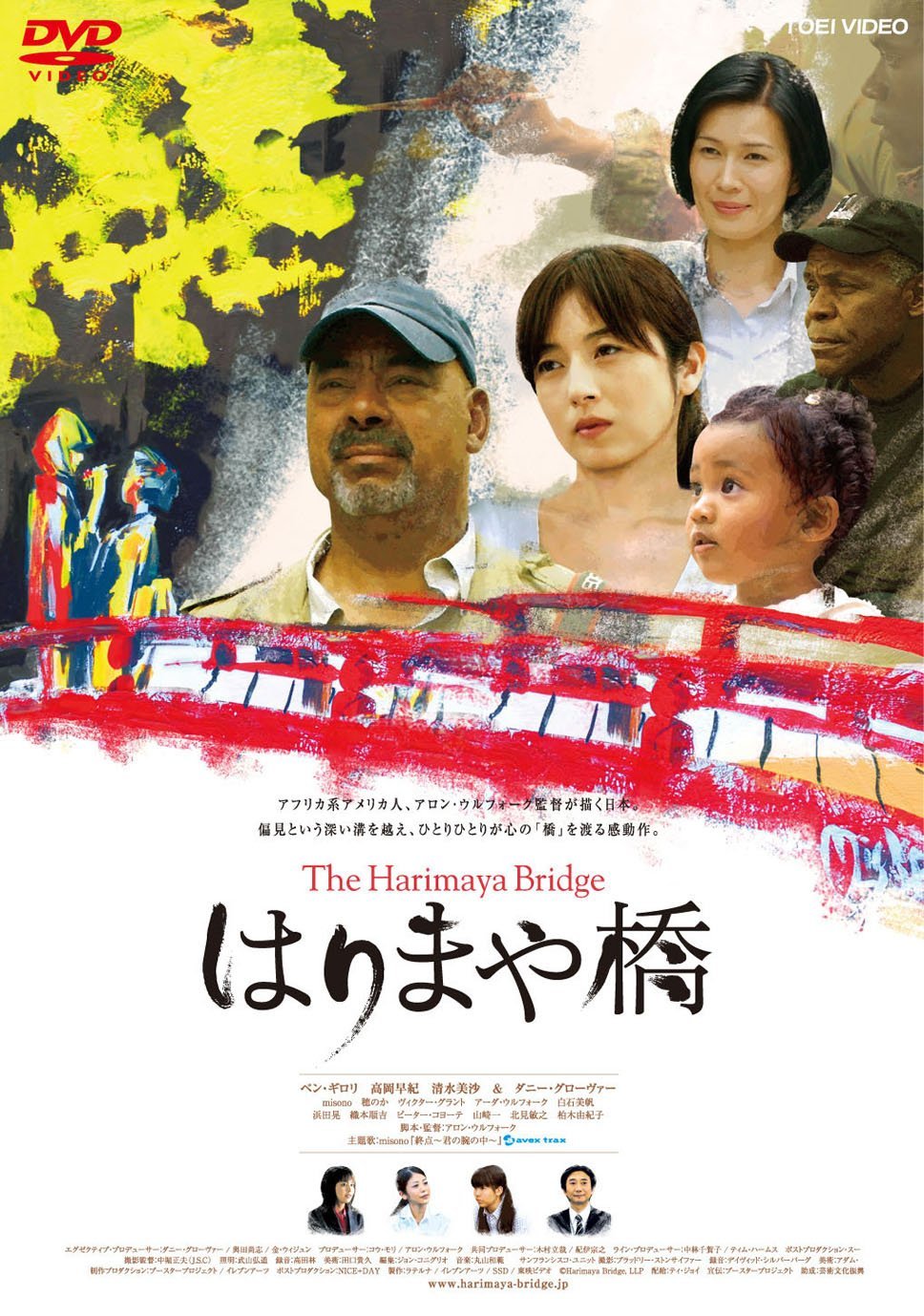
高知県を舞台に撮影された「はりまや橋」という映画がありました。
監督はアメリカ人のアーロン・ウルフォーク(Aaron Woolfolk)。
彼は高知に長く住み、3本の映画を高知を舞台に作りました。「はりまや橋」は彼の3本目の作品です。
実は私、石川は当時(2008年)、この映画の撮影にスチールカメラマンとして参加していました。スチールカメラマンというのは、映画そのものではなく、ポスターなどの広告宣伝のための撮影をするカメラマンです。
そのアーロン監督、現在でも毎年のように日本そして高知を訪れています。今年も9月に高知に来訪、「はりまや橋」の縁もあって、土佐町の石川を訪ねて来てくれました。
そしてその2ヶ月後。こんなエッセイがアーロン監督から届いたのです。
アーロン・ウルフォーク
あたたかな想いに包まれていた。
2017年9月、あるうららかな土曜日、土佐町を巡ったときのこと。美しい風景、心あたたかい人々、田舎のコミュニティ、都市からだいたい1時間。まさしく私の好きなタイプの地域だと感じた。
町の様々な場所 ー中心の商店街、アメガエリの滝、瀬戸渓谷、さめうらダムー を巡りながら思ったこと。この町は、過去25年の大半を過ごしたこの国の、私の好みの部分を集約したような場所だということ。
しかしまたそれは、土佐町それから高知県全体として、解決してほしい問題を私に思い出させる時間でもあった。
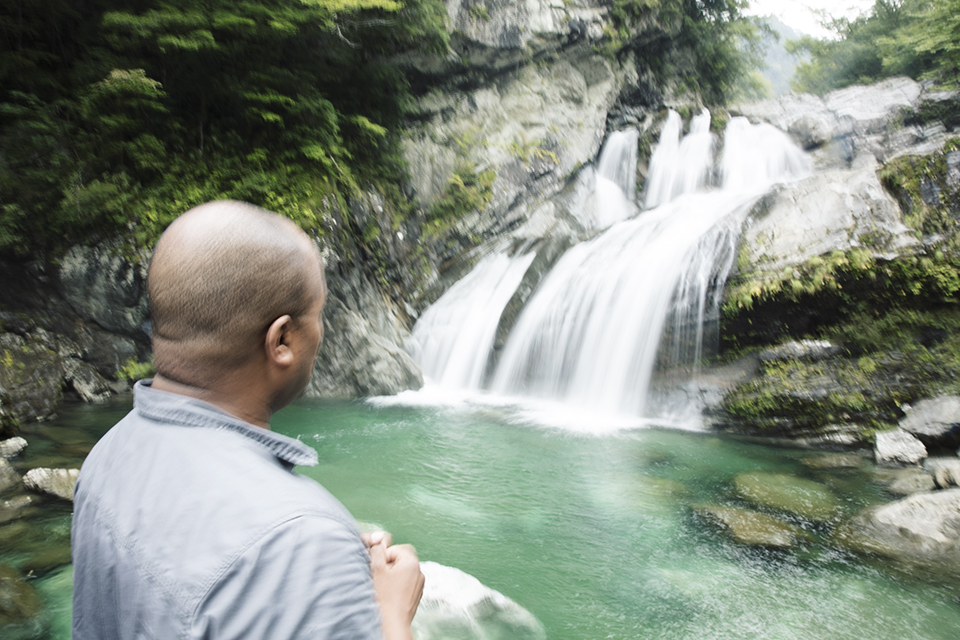
アメガエリの滝
私が高知を初めて訪れたのは1992年のこと。
日本政府が企画した英語教育と文化交流プログラムであるジャパン・エクスチェンジとティーチング・プログラム(JET)のためだった。大学時代の後半、このプログラムに申し込んだ時点で私が日本に関して知っていた場所は、わずかに東京と大阪、そして(戦争の記憶として)広島と長崎だけだった。「日本のどこに行きたいか」と質問のある申請用紙に、私は「東京または大阪」と書いた。しかし他のほとんどの申請者たちも、私と似たりよったりな知識しか持ち合わせていなかったはずで、つまり彼らもまた「東京または大阪」と書いていたはずだ。
それはまたつまり、ほとんど全員が希望の場所には赴任できなかったということであり、みな希望外の場所へと送られて行ったのだ。私の場合、それが高知県だった。
私はサンフランシスコのベイエリアで生まれ育ち、大学まで通った。ベイエリアの人口は800万人以上、アメリカでも最も人口の密集している地域のひとつだ。小さなころは、ときおり田舎に住む親戚を訪れたり、たまにキャンプに行ったりしたこともあったが、それまでの人生の大半は都会で過ごしていた。
だから私が初めて高知空港に降り立ち、即座に須崎市に連れてこられた時のカルチャーショックをあなたにも想像してほしいと思う。それはその時点までずっと慣れ親しんできたライフスタイルからの突然の別れであって、順応するにもちょっとした時間が必要だったのだ。
だが結局のところ、私は慣れたのだ。いやそれ以上に、大いに気に入ったのだ。私はこういった小さな町の暖かな暮らしを愛し、特にこの親切な人々を愛した。そして大都市に比べて静かでゆったりとした生活を愛した。それは須崎だけに限った話ではない。私は文科省に任命された英語教育助手だったから、高岡郡全体の、海沿いの寂れた町や山の上の小さな村の中学校も周った。田舎の暮らしを満喫し、それをとても心地よく感じた。
やがてアメリカに戻り、大学院に進み、映画監督になった。
そしてその後も高知には1年に1度のペースで訪れていた。
結果として、3本の映画を高知で撮ることになったのは、私のなかで高知の印象が鮮烈すぎたということだろう。短編の「駅」と「黒い羊」、そして「はりまや橋」。
日本の田舎の美、特に高知の美しさを、世界の観衆に観せることができるということは、これ以上ないくらいエキサイティングなできごとだった。
この9月に、年に一度の日本訪問の準備をしていたとき、友人の石川拓也に連絡し、高知も訪れる予定があることを伝えた。すると彼は私を土佐町に招いた。彼は写真を撮りながら世界を旅した後、東京から土佐町に移り住んでいた。
私は土佐町は初めてだったこともあり、彼の招きを快く受け入れた。その日は高知市の友人である久子と3人で土佐町の様々な場所を巡ることとなった。
拓也と初めて会ったのは、彼が映画「はりまや橋」のスチールカメラマンとして仕事していた時のことだ。その後、SNSを通じて、彼が世界を旅し撮影をしている様を私は見てきた。
高知での映画製作を通しての経験が、明らかに彼に深い影響を与えていることを知って、私はうれしく思った。確かに、そういったたくさんの経験を私は映画製作を通じてしてきたのだ。
高知で映画を作るといつだって、東京からのスタッフが高知と恋に落ちてしまう。人生を変えるような衝撃を受けるのだ。高知で出会った人と結婚したスタッフもいる。休暇のたびに高知を訪れるようになったスタッフもいる。そして今、実際にそこに移住したスタッフがいるということだ。
土佐町を一緒に周りながら、私は拓也が移住した理由を深く理解した。この日は、私が日本の魅力だと感じていることをたくさん経験したのだから。
美しい風景、親切な人々、気さくで心地よい感じのコミュニティ。
日本の伝統文化は、田舎の山あいの町と村に最も色濃く残っている。25年前に私が高知県に恋した理由と同じことを、土佐町を周りながらいくつも見つけたのだった。
いつか活用してみたいと感じる、パーフェクトな場所も発見した。瀬戸小学校だ。2001年に閉校して以来、地元の人たちの手によってとてもよく整備された素晴らしい施設だ。現在はコミュニティセンターになっているが、ふだんは空っぽだという。芸術家が引きこもるには最適の場所だ。作家や画家、作曲家がここに来て、しばらく一人静かに時を過ごし、創作に集中できるだろう。周囲の環境には芸術家をインスパイアする美が溢れている。数週間くらい生活しながら仕事するために必要なものは全て整っている。
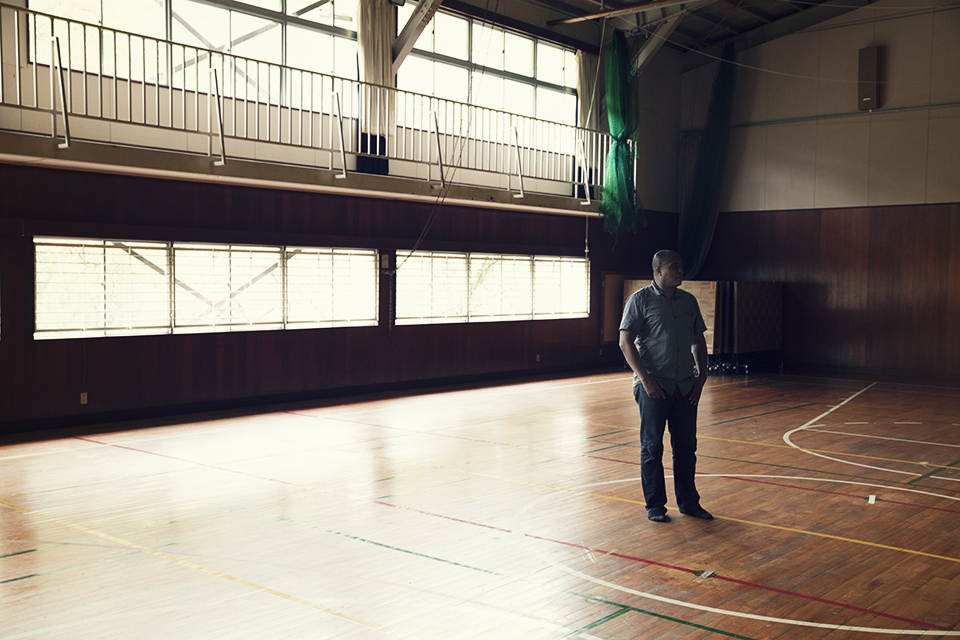
旧瀬戸小学校
土佐町は愛すべき町だ。しかし問題がないわけではないことも、町を周りながら思ったりする。近年は町外に出て行く人も多いと聞いて少し残念に思った。運動会の日の土佐町小中学校を訪れた際には、学生の数が往年に比べ減少しているということも聞いた。瀬戸小学校を歩きながら、この建物が16年前に最後の卒業生を見送った時のことを想像した。
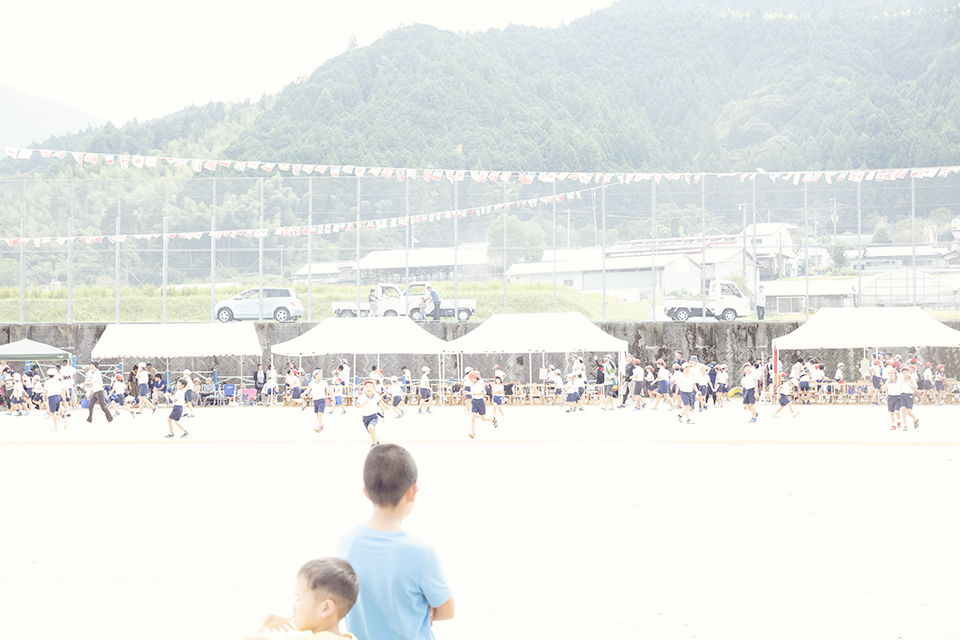
土佐町小中学校
ここ数年よく耳にする、地方での人口の減少を気にかけている。日本の全国的な課題だが、高知のような場所にいると実感がある。村や町が近隣の自治体に吸収合併されたという話を聞くこともある。人口流出と出生率低下の結果として子どもが減ったことを受けて学校が閉校されるのも、住民が減っているので地域の伝統が維持しづらくなっていることも耳にしたことがある。
人口流出には様々な複雑な原因があるはずだ。理論武装したたくさんの学術的・政治的分野の専門家がいるだろうから、アウトサイダーの映画監督であり作家である私が言えることはあまり多くない。
だが私にはとても強い想いがある。
それは、小さな農村が、今後生き残っていくだけではなく、成長し繁栄するコミュニティになっていく様を見たいということ。
たとえば農村のコミュニティに企業が投資し、もうこれ以上人々が仕事のために引っ越しを考えないで済むようになる様が見たいということ。
このような地方に暮らすことの魅力を、もっとたくさんの人が理解する様を見たいということ。
土佐町のような場所に、政府がきちんと関わり合いを持って進んでいく様を見たいということ。
9月のあるうららかな土曜日に、私が土佐町で出会ったものは、個人的にも職業的にも、この25年間私を日本に魅了し続けたものと同じもの。
私はこれからも、映画監督として作家として、このような場所を照らすための作品を作り続けるだろう。
私は、こういったコミュニティの素晴らしい魅力を日本のたくさんの人々が(世界中の人々も)再発見し、そして再活性化に取り組む姿を夢に見ている。
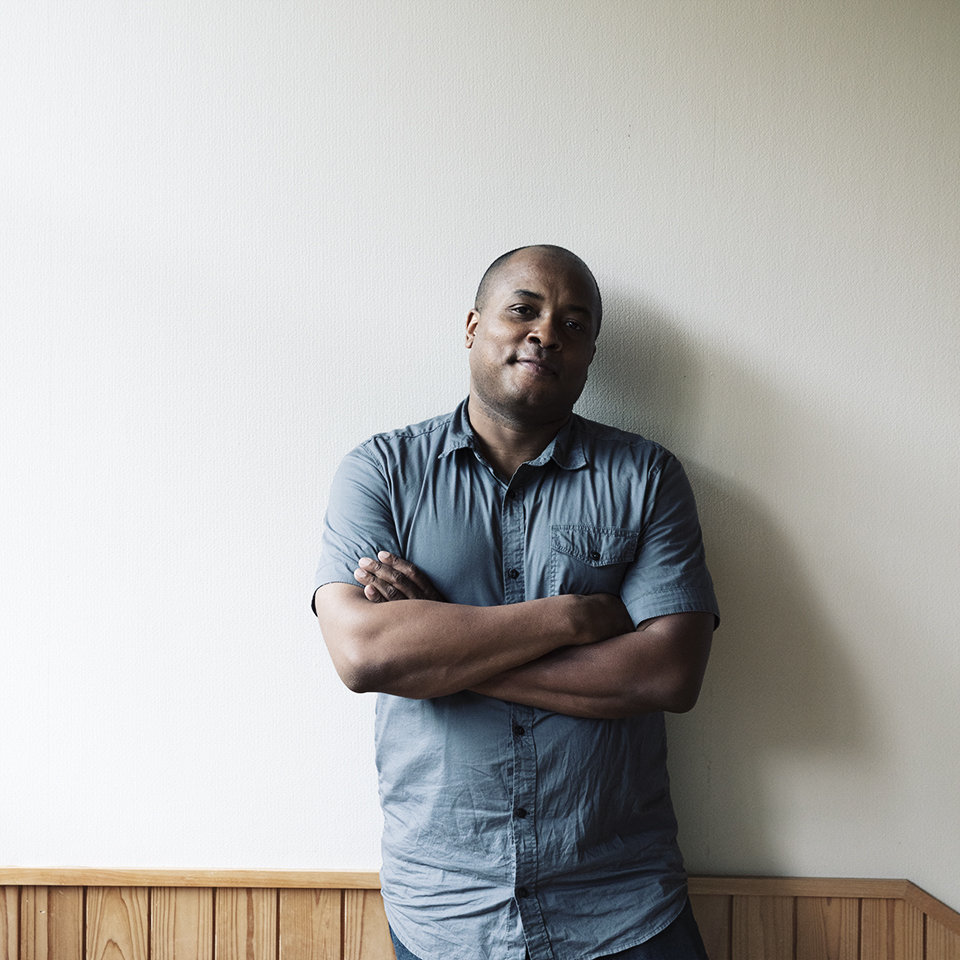
アーロン・ウルフォーク(Aaron Woolfolk) アメリカ・カリフォルニア生まれ。1992年から1年間、文部省(現在の文科省)により、高知県に外国語指導助手(ALT)として派遣される。1993年、コロンビア大学大学院芸術学科映画専攻に入学。1997年、全米監督協会最優秀学生映画作家賞短篇部門を受賞。1999年、高知県内で撮影した『黒い羊』で再び同賞を受賞。2004年、ウォルト・ディズニー・スタジオ/ABCエンタテインメントの脚本家フェローとなる。竹内まりやのファン。
アーロン・ウルフォーク監督作品「はりまや橋」は高知を舞台に、高岡早紀、清水美砂、ハリウッドからベン・ギロリ、ダニー・グローヴァーが出演する映画です。
英語の原文はこちら | Original version in English

Japanese version from here. | 日本語はこちら
by Aaron Woolfolk
[To see the photos that go with this article, please see the Japanese version here.]
I had a lot of warm emotions as I was shown around Tosa-cho on a warm Saturday in September, 2017, as it was the embodiment of my favorite type of locale: a rural community with a beautiful landscape and kind people, located about an hour from the nearest city. As I toured various parts of town – the commercial center, Amegaeri no Taki, the Sedo River area, Sameura Dam – it seemed to sum up many of the favorite things I have often highlighted about Japan in the 25 years the country has been a major part of my life. However, it also served as a reminder of an issue that I hope Tosa-cho – and Kochi-ken as a whole – can be at the forefront of solving.
I first came to Kochi in 1992 on the Japan Exchange and Teaching (JET) Program, an English-teaching/cross-cultural program sponsored by the Japanese government. When I applied for the program during my senior year of college, the only places in Japan I had any awareness of were Tokyo, Osaka, and (because of the tragedy of war) Hiroshima and Nagasaki. On the application form, where it asked if I had any location preferences, I chose Tokyo and Osaka. But most of the thousands of other applicants had the same level of knowledge about places in Japan, which meant they also requested Tokyo and Osaka. That meant almost no one was awarded his or her preference and was sent elsewhere, with me being assigned to Kochi.
I was born, raised in, and attended college in the San Francisco Bay Area, one of the most populous regions of the United States with more than 8 million people. I had visited relatives in rural areas on a few occasions as a child, and I had gone camping two or three times, but most of my existence had been a big-city life. So maybe you can imagine the immediate culture shock I felt when I arrived at Kochi Airport for the first time and was immediately driven to Susaki-shi. It was such a sharp departure from the type of life I had always known, and it took me some time to get used to it.
But get used to it I did. In fact, I grew to love it. I loved the warmth of living in such a small town, particularly the kindness of the people. I also learned to appreciate the quiet, and the slowness of life as compared to the big city. And it was more than just Susaki: I was an assistant language teacher assigned to a county board of education office. That meant that I went to junior high schools all over Takaoka-gun, from isolated towns along the ocean to tiny villages far up in the mountains. I was living the rural life and I absolutely loved it.
Eventually I returned to the United States, attended graduate school, and became a filmmaker. But Kochi left such a strong impression on me that I not only went back to visit annually, but I also returned to make three films: the shorts Eki and Kuroi Hitsuji and the feature Harimaya-bashi. It was so exciting for me to show audiences around the world the beauty of life in rural Japan, particularly Kochi.
As I prepared to make my annual visit to Japan this past September, I contacted my friend Ishikawa Takuya and told him I was coming to Kochi. He invited me to visit Tosa-cho, where he had moved to from Tokyo after spending a few years traveling around the world taking photographs. I happily accepted, as I had never been to Tosa-cho before. With my friend Hisako of Kochi-shi, the three of us spent several hours touring various parts of the town.
I first met Takuya when he was hired as the still photographer for Harimaya-bashi, and afterwards I watched through social media as he traveled the world and practiced his photographic art. I felt proud that the experiences he had in Kochi on my film had apparently left a deep impression on him. Indeed, I have had much experience with this. It seems that every time I make a film in Kochi, I have crew members from Tokyo that come there for the first time and fall in love with it in a way that changes their lives. I’ve had crew members get married to people they met in Kochi. I’ve had crew members make Kochi their regular vacation spot. And now I’ve had a crew member actually move there.
As we went around Tosa-cho, I fully understood why Takuya decided to relocate there. My day in the town showed me many of the favorite things I love about Japan: the beauty of the land; the kindness of the people; the safe, pleasant, hospitable nature of the community; and the cultural traditions that demonstrate why I believe that Japanese culture is strongest in its rural mountain towns and villages. In Tosa-cho I found the same things that started my love affair with Kochi-ken 25 years ago.
I even found a perfect place that I hope to someday utilize: Sedo Shogakko. It is a wonderful facility that has been lovingly maintained by the local community since it closed as a school in 2001. I learned that the building is often used as a community center, but that it usually sits empty. I think it would be perfect as an artist’s retreat: a place where a writer or painter or music composer can go to spend time alone to create. The surrounding area around the building has beauty that can inspire artists. And the building itself has everything a person needs to live and work for a week or two.
There is so much to love about Tosa-cho. However, there is one troubling thing that struck me as I went around the town. I was dismayed to learn that many people have moved away in recent years years. As I visited Tosa-cho Shochugakko while it was having its Sports Day, I was disturbed to hear that the student population has been decreasing. As I walked through Sedo Shogakko, I was haunted by a perfectly viable facility that saw its last group of students 16 years ago.
For several years now I have been concerned about the population drain in rural Japan. It is a national problem that is very much felt in places like Kochi. I have watched as villages and towns have been absorbed by or combined with neighboring municipalities, as schools have been forced to close due to a lack of young people as a result of rural flight and Japan’s decreasing birthrate, and as local traditions struggle to be maintained in the face of declining numbers of residents.
Rural flight is an issue with a complexity of causes, and there are many academic and public policy experts who are more intellectually equipped to speak on it than me. I’m just a foreign outsider filmmaker and writer. But it is still something that I feel very strongly about. I want to see rural communities in Japan not only survive, but thrive and grow. I want to see corporations invest in and plan around rural communities so that people don’t have to move away to find work. I want to see more people appreciate the advantages of moving to and living in such places. I want to see the national government make a full-fledged commitment to the survival and maintenance of places like Tosa-cho.
What I found in Tosa-cho on that warm Saturday in September were a lot of the things that have kept me returning to Japan for 25 years, both personally and professionally. As a filmmaker and writer, I plan to continue creating work that highlights such places. Overall, I hope that people in Japan (and around the world) will discover or reacquaint themselves with the wonderful advantages of such communities, and will play a part in their revitalization.
A DVD of Aaron’s film Harimaya-bashi, which is set in Kochi Prefecture and stars Takaoka Saki and Shimizu Misa and Hollywood actors Ben Guillory and Danny Glover, can be ordered from Amazon Japan.
これが『お母さんの台所・皿鉢料理編』の最後の記事になります。
教えていただいたのは、土佐町地蔵寺地区にある長野商店店主、長野静代さん。
長野さんは40年間、美味しいお寿司やお弁当、おかずを作り続けてきました。
皿鉢料理の作り方を教えていただく前に、長年痛みをこらえてきた右手の筋が切れてしまったと聞き、長野さんが治ってからまたお願いしようと思っていましたが、長野さんは「大丈夫、やりましょう」と言ってくださいました。迷いましたが、そのお言葉に甘えさせていただくことにしました。
それが2017年3月。
その時の記録が『お母さんの台所・皿鉢料理編』です。
「皿鉢料理 その2 さば寿司の作り方」に、さばに寿司飯を詰めるところの動画を入れたかったので、日をあらためてもう一度撮影させていただいたりもしました。
その時はもう5月になっていて、3月の時にはまだなかった山椒の葉を寿司飯の中に刻んで入れ、初春から新緑の季節への移り変わりを感じたことでした。
長野さんが長年培ってきたこの技と味、40年間毎日台所へ立ち、美味しいものを作り続けてきたことを、しっかりと残しておきたかった。その思いで、この『お母さんの台所・皿鉢料理編』を作りました。
作り方や味付けに正解はなく「自由に、やりたいようにやったらええのよ」と長野さんは教えてくださいました。
この皿鉢料理の向こうに、たくさんの人たちの笑顔が見えます。
長野さんはそれを見つめながら、40年間作り続けてきたのだろうと思います。長野さんには本当にお世話になりました。感謝の気持ちでいっぱいです。


